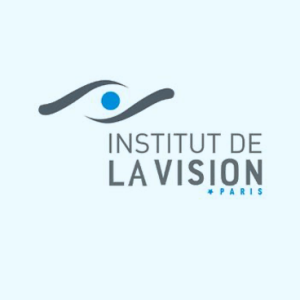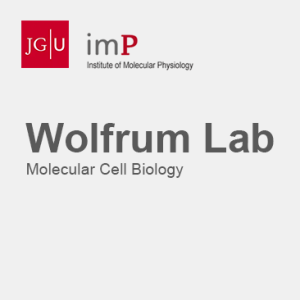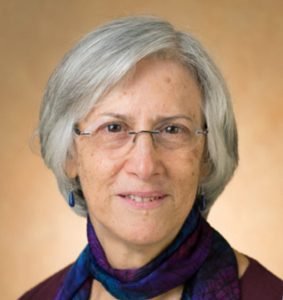Programs SSNEU
Elvir Becirovic Lab Universität Zürich
DUAL APPROACH TO GENE THERAPY —combining MYO7A gene supplementation with CRISPR-based gene activation— TO PAVE THE WAY FOR FUTURE USH1B TREATMENTS.
Dr. Becirovic work focuses on developing gene therapy strategies for Usher Syndrome Type 1B (USH1B) — the most severe form of Usher Syndrome, which causes profound congenital deafness and progressive childhood blindness due to Retinitis Pigmentosa.
Building on key breakthroughs in mouse models, Prof. Becirovic’s lab is now advancing two complementary approaches:
-
Gene Supplementation: The team is using a novel dual AAV vector system based on mRNA trans-splicing to deliver the full MYO7A gene, which is mutated in USH1B.
-
Gene Activation: They are also applying CRISPRa (CRISPR activation) technology to epigenetically activate MYO7B — a functionally related gene — as a potential therapeutic alternative.
To ensure the relevance of these approaches for human therapy, the team will conduct preclinical studies in wild-type minipigs. These animals have a retinal structure and eye size similar to humans, allowing for more accurate and meaningful evaluation.
Our support will enable Prof. Becirovic’s team to carry out these critical studies and prepare for future trials using USH1B-specific minipig models.This work brings us closer to safe, effective treatments for children affected by this devastating condition.
This program highlights not only the promise of gene therapy innovation but also the power of collaboration between nonprofit organizations and academic research to accelerate progress for rare diseases like Usher Syndrome.
David Gamm Lab University of Wisconsin-Madison
GENERATION OF GENE EDITED CRXpMYO7A-HA TAGGED WA09 LINE
The research project aims to study Usher syndrome type 1B (USH1B) using the WA09 line of human embryonic stem cells (hESCs). The main objective of the research is to gain a deeper understanding of the MYO7A interactome, particularly in photoreceptor cells derived from retinal organoids. The MYO7A protein plays a crucial role in the function of photoreceptor cells in the retina. Defects in this protein cause vision loss in people with USH1B.
The research project is divided into two phases. In this first phase, which will be funded by SSNE, the team will use state-of-the-art CRISPR/Cas9 technology to edit human embryonic stem cells (hESCs).
The team will use CRISPR/Cas9 technology to edit the hESCs for the detection and isolation of the MYO7A protein for subsequent experiments.
The relevance of the project lies in its potential contributions to future treatments for Usher 1B: A better understanding of the proteins that interact with MYO7A in photoreceptor cells can shed light on the molecular pathways involved in retinal function.
This knowledge can identify potential targets for therapeutic interventions to treat USH1B. The ability to create retinal organoids that closely mimic the early development of the human retina would be a valuable tool for studying USH1B. Retinal organoids could be used to test new treatments and to investigate the underlying mechanisms of the disease. The identification of small molecules or drugs that modulate the interactions between MYO7A and other proteins could lead to the development of new pharmacological treatments for USH1B. These drugs could act to restore MYO7A function or to compensate for the effects of the mutations that cause USH1B.
Gene editing targeted to individuals with USH1B could potentially restore proper MYO7A function and prevent vision loss. This is a potentially very promising therapeutic strategy, but it is still in its early stages of development.
In summary, David Gamm’s research project is a significant step towards the development of new treatments for Usher 1B. The research team is well-positioned to achieve the project’s goals and make a significant contribution to this field.
Other programs funded through Grants & Foundations
DEVELOPMENT OF GENE THERAPIES BASED ON UNDERSTANDING OF USH1B PATHOGENESIS
Isabelle Audo, Deniz Dalkara, Aziz El Amraoui and Serge Picaud
This is a large 5 year, multi-track project funded by Save Sight Now and the Foundation Fighting Blindness. This project is designed to bring together basic scientific discoveries as well as innovative therapeutic interventions to ensure timely fulfillment of two main objectives:
- USH1B genotype-phenotype correlations, disease natural history study (Light4Deaf) and USH1B molecular signatures, and
- The development of gene therapies based on understanding of USH1B pathogenesis.
CHARACTERIZATION OF NATURALLY OCCURRING USH1B PIG MODEL
Uwe Wolfrum and Kerstin Wolfrum
This a 3 year program funded by Save Sight Now. The Wolfrums have made an incredible discovery of a naturally occurring USH1B pig model and are breeding and supporting an USH1B pig colony in order to study, characterize and establish a porcine model for Usher syndrome type 1B, to later use for testing new therapies.
CREATION OF USH1B RETINAL ORGANOIDS TO DEVELOP CRITICALLY NEEDED THERAPIES
Mark Pennesi (MD, PHD)
Mark Pennesi and his team will develop translational human retinal organoid models of USH1B retinal degeneration to
- Uncover previously unknown molecular disease mechanisms,
- Determine the optimal window for gene therapy, and
- Optimize therapeutic interventions for USH1B.
Resulting therapies will lead to future testing in larger animal models.
CREATION AND CHARACTERIZATION OF A NON-HUMAN PRIMATE USH 1B MODEL.
Martha Neuringer (PhD)
Dr. Neuringer and her colleagues are using the gene-editing technique CRISPR/Cas9 to develop large animal models of Usher syndrome type 1B, which is caused by mutations in the gene MYO7A. Better translational models are urgently needed for USH1B to facilitate understanding pathogenetic processes and test potential therapies. Nonhuman primates best mirror human retina anatomy and function by having a macula and fovea, as well as photoreceptor calyceal processes that are a major site of dysfunction in Usher syndrome but are absent in rodents. As of May 2022, Martha and her team have successfully created an USH1B NHP model that is expressing all three phenotypes associated with Usher syndrome type 1B: 1) balance issues 2) bilateral profound hearing-loss 3) early onset of retinal degeneration.
Martha’s program requires sustained funding to care for this new primate – Gema – as well an entire cohort of primates in order to ensure the process is replicable.






